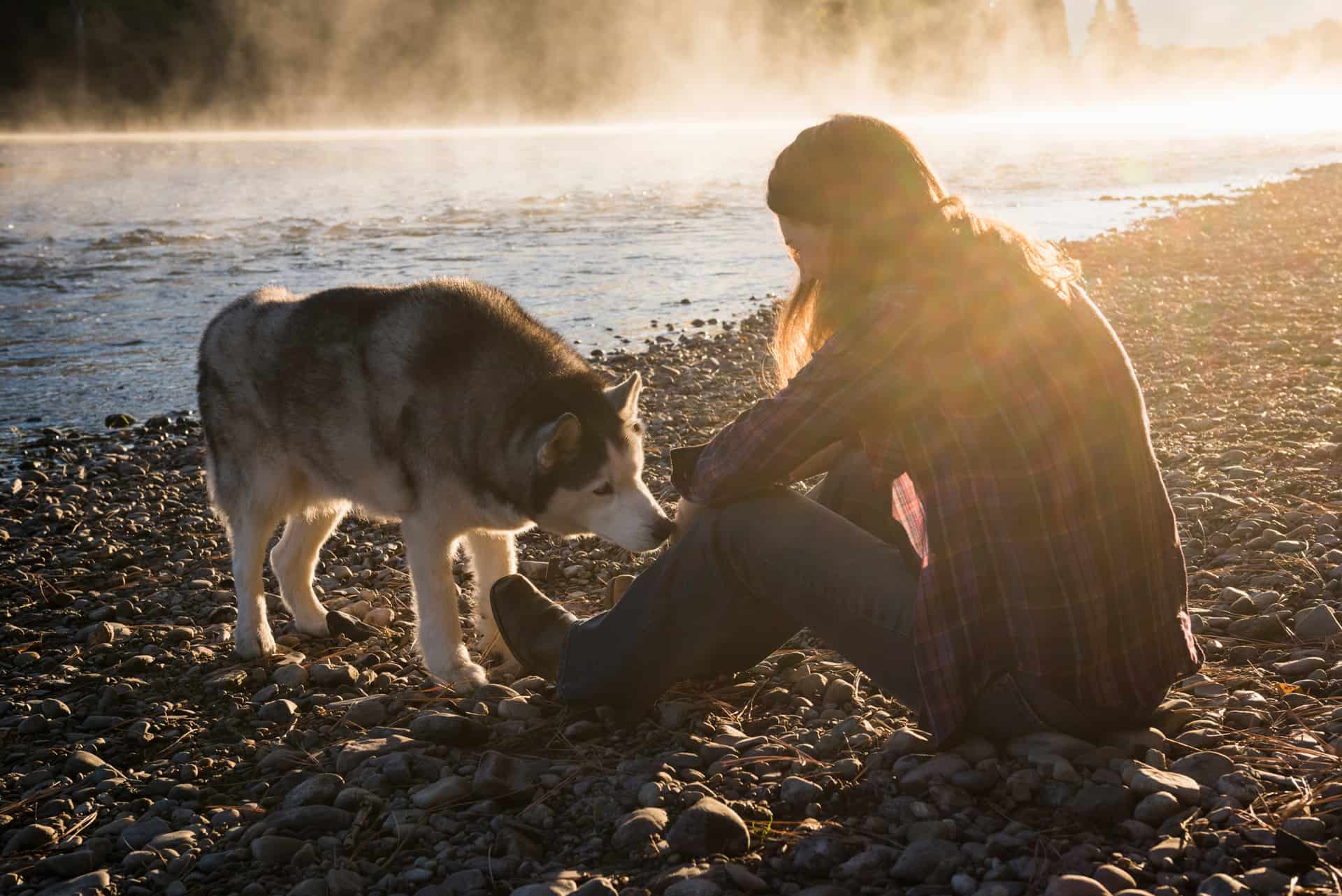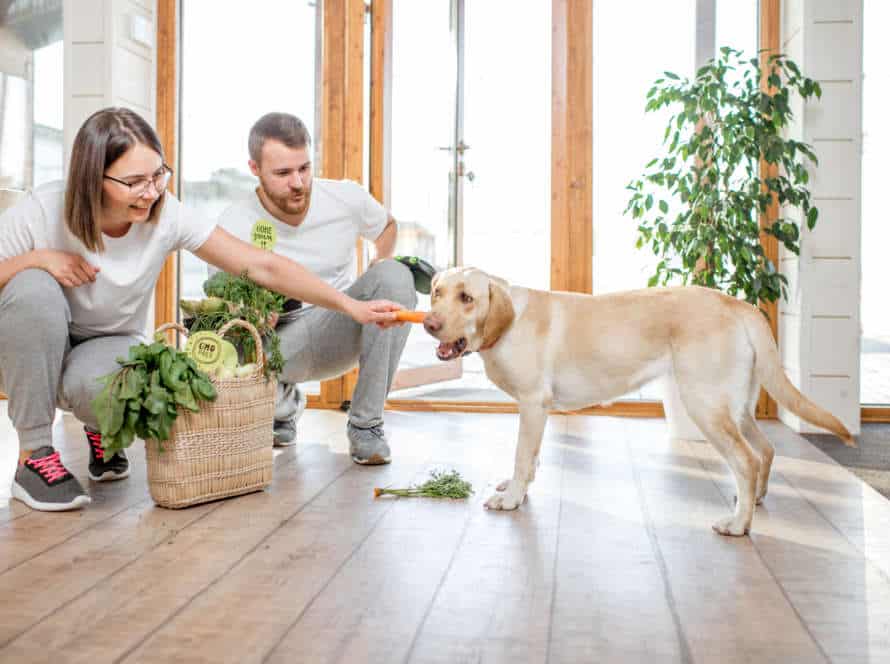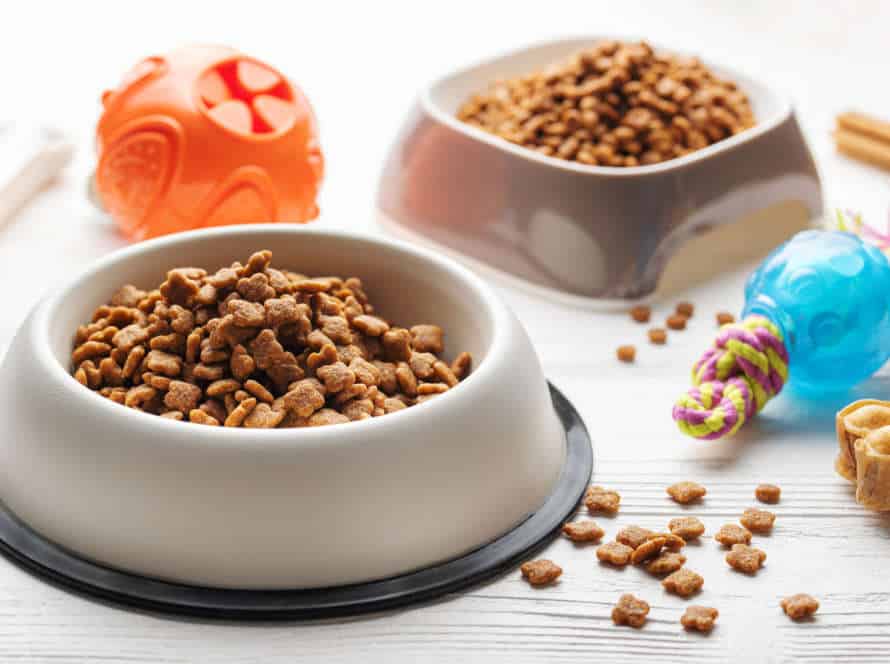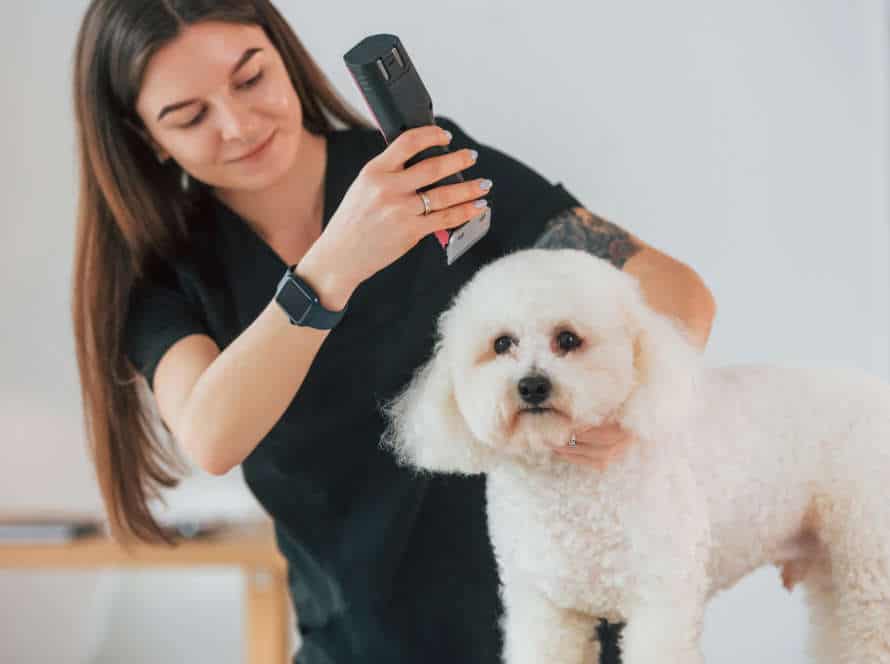The Many Benefits of Regular Exercise for Dogs
Exercising your dog has many benefits, not only physically, but mentally too. Here are some of them:
Physical Benefits:
- Keeping healthy weight and body condition.
- Improving cardiovascular and respiratory health.
- Building strong bones and muscles.
- Reducing the risk of chronic illnesses, like diabetes and arthritis.
Mental Benefits:
- Stimulating the mind, stopping boredom and destructive behaviours.
- Lowering stress and anxiety levels.
- Promoting better sleep.
- Enhancing cognitive function and learning.
Pro tip: Talk to your vet and make a customised exercise plan for your dog’s age, breed, and health. A consistent exercise routine will keep your pup healthy, happy, and well-behaved.
Physical Benefits of Exercise for Dogs
Exercise is important for your pup’s health, similar to humans. Working out on a regular basis helps keep Fido in tip-top shape, aid in weight control, and boost agility and stamina. It also lowers the likelihood of joint and muscle complications. Here, we’ll look further into the physical benefits of exercising with your doggo.
Maintaining a Healthy Weight
Exercise is a must to keep a pup’s weight in check, plus many physical advantages to boot their overall wellness. Here’s what exercise can do for dogs:
- Weight control: Exercise helps dogs stay slim and safe from obesity and its related illnesses.
- Stronger bones and muscles: Working out will make their muscles and bones tougher, decreasing the chances of injury and boosting their flexibility.
- Improved cardiovascular health: Exercise boosts a pup’s heart health, lowering the risks of heart diseases and other conditions.
- Better mental health: Exercise gets their endorphins running, helping to reduce their stress, anxiety and boosting their mental well-being.
Pro tip: Be sure to give your pup an exercise plan that’s suitable for their breed, age, and health condition.
Strengthening the muscles and bones
Exercising often can help your pup’s physical health. It’ll make their muscles and bones stronger. Plus, they’ll get more benefits than just losing weight! Such as better flexibility, heart and lung fitness, and improved coordination and balance.
Here’s how it affects their body:
- Muscle strength – Exercising will boost muscle growth and endurance.
- Healthy bones – It can prevent bone loss and even increase bone density, reducing the risk of fractures and osteoporosis.
- Joints – Exercise keeps the joints healthy and lowers the chances of arthritis and joint pain.
- Heart and lungs – Regular exercise helps the heart muscle and increases lung capacity.
- Coordination and balance – It improves spatial awareness, coordination, and balance, avoiding falls and injuries.
Also, for a pup to stay healthy and happy, they need both physical and mental stimulation. Exercise is key for their overall wellbeing.
Improving cardiovascular health
Exercising regularly gives dogs many benefits, like improved cardiovascular health. It helps keep them lean and fit, plus lowers their risk for heart disease and other troubles. Here’s how regular exercise can help your pup’s cardiovascular health:
- Heart muscle strengthening so blood pumps better.
- Lowering blood pressure to steer clear of hypertension and heart disease.
- Healthy weight maintenance to take the pressure off their hearts.
- Improved circulation with oxygen and nutrients to the heart and other parts.
For your dog’s total health, try doing 30 minutes of moderate exercise daily, like running or walking. It’ll make your furry friend much happier!
Mental and Behavioral Benefits of Exercise for Dogs
Exercise isn’t just about keeping your pup in shape. It also has mental and behavioral benefits! Regular exercise can help your dog stay calm, ease anxiety, and decrease destructive behaviors. Plus, it can help your pup maintain good muscle tone, joint flexibility, and good cardiovascular health. Let’s look at the mental and behavioral benefits of exercise for dogs.
Reducing anxiety and stress
Exercising regularly can help dogs reduce their anxiety and stress. It gives them an outlet to release their energy, builds a routine, and keeps them healthy. Here are some of the benefits that can help with anxious or stressed dogs:
- Physical exhaustion – Exercise can make dogs tired, making them more relaxed.
- Routine – Regular exercise can help dogs build a routine, which can lower stress.
- Socialization – Exercise increases chances for socializing, helping them not feel lonely and act positively.
- Pro Tip – Talk to your vet about your pup’s exercise routine to make sure it’s the right fit for their health and temperament.
Improving overall behavior and obedience
Exercise can give dogs many mental and behavioral bonuses. This leads to better behavior and obedience.
It can help against stress and anxiety, which can make your pup chew furniture or bark too much.
Exercise also gives them a routine, so they have a sense of purpose.
Plus, it can help with socialization and aggression. Dogs that have regular exercise are comfortable with new situations, dogs and people.
In short, exercise can make your pup happy and obedient. So, include it in their routine to help them live their best life.
Tip: Exercise doesn’t need to be long or hard. Even simple walks or playtime make a difference.
Reducing the risk of depression
Exercising your pup can give them oodles of mental and behavioural perks! Research suggests that it stimulates the release of endorphins, which act as natural mood-boosters and help reduce stress and anxiety. Moreover, it can amp up brain function, bring out the best in their behaviour and provide chances to socialise.
Here’s a quick overview of the key benefits of exercising your dog:
- Less anxiety and depression
- Better cognitive function
- Improved socialisation
- Increased energy
- Healthy weight management
Remember that different breeds and ages need different levels of exercise, so speak to your vet to decide the best workout plan for your pooch!
Social Benefits of Exercise for Dogs
Humans and dogs alike need regular exercise to stay healthy and have a good life. It also helps to prevent bad behaviour and brings social benefits. Exercise lowers stress and anxiety, helps with remembering commands, and even makes your bond with your pup better.
Let us examine the social benefits of exercising with your dog regularly.
Developing social skills and behaviors
Giving your pup the right social skills and behaviors is key for a confident and happy dog. Exercise is one way to do this and offers lots of other advantages too! Let’s look at some of the social benefits of exercising your pooch:
- Improved socialization – Working out gives your pup a chance to meet people and other dogs, making them a pro at socializing.
- Reduced anxiety – Exercise releases endorphins and lowers stress hormones, which can stop anxious behavior in its tracks.
- Increased confidence – Working out regularly can make your pup more comfortable in new places and less likely to be afraid.
- Better behavior – Pups who exercise often are usually better behaved and have fewer behavioral issues than those who don’t.
Make exercise part of your pup’s routine to help them stay healthy and happy! Pro tip: Take your pup on regular walks, runs, or trips to the dog park to give them time to play and socialize.
Enhancing the bond between the dog and the owner
Exercising with your pup is a great way to strengthen the bond between you two! Not only does it make for a healthier doggo, but it also brings social benefits. Here are a few:
- Improved socialization! Through exercise, your dog can interact with other dogs and people, which helps them feel more comfortable in new environments.
- More trust and obedience! Spending time outdoors together means your pup will be more likely to listen to your commands.
- Lower stress and anxiety! Exercise naturally reduces stress and can even help with separation anxiety, excessive barking, and destructive behavior.
For best results, switch up activities like hiking, swimming, or even a game of fetch. This will keep your pup stimulated and make your bond even stronger!
Providing opportunities for interaction with other dogs
For your pup’s social well-being, it’s vital to give it chances to interact with other dogs during exercise. Exercise is important for your furry friend’s physical and mental health and being social can add to those benefits. Here are some ways to let your dog socialize while it exercises:
- Visit a dog park: Let your pup get to know other dogs and enjoy running without a leash.
- Join a walking group: Sign up your dog to a group that goes on walks together. This is a great way to meet other owners and let your pup socialize.
- Do a training class: Training classes provide both exercise and the opportunity to interact with other dogs and people.
- Go to dog-friendly events: Look in your area for events that allow dogs, like festivals, fairs, or parades. This can give your pup a chance to socialize.
By giving your furry friend the chance to be social while exercising, you can make sure it’s getting the most out of its exercise time. Remember to supervise all interactions with other dogs, and make sure your pup’s vaccinations and parasite treatments are up-to-date.
Types of Exercise for Dogs
Exercise is key for a pup’s overall health. But not all types of exercise are the same. Swimming, running and even canine sports like agility – each offers different benefits! Let’s take a closer look at the different types of exercise for dogs.
Walks and Hikes
Walks and hikes are a great way to get your pup moving. They help keep healthy body weight, strong muscles, and good heart health. Plus, they give your pup:
- Socialization – Chances to meet other animals and people, so your pup can be friendly and less aggressive.
- Mental stimulation – They explore the world around them, using their senses and reducing stress.
- Prevention – Regular exercise helps cut down on destructive behaviors like chewing and barking.
- Better digestion – Exercise helps keep digestion regular and prevent constipation.
In short, walking and hiking are essential for canine health. Make sure to incorporate them into your pup’s daily routine!
Games and Activities
Playing games and providing activities is important for your pup’s physical and mental wellbeing.
Here’s a few to consider for their daily exercise:
- Fetch – Dogs adore fetch! It develops agility, coordination, and endurance.
- Tug-of-war – Great for strength and releasing energy.
- Hide and Seek – Improves their listening and responding skills.
- Agility training – Jumping, running, and climbing builds endurance and coordination, plus enhances your bond.
Pro tip: Exercise isn’t only vital for physical health, but emotional wellbeing too. Helps reduce anxiety and aggression, making both pup and owner happy.
Agility training
Agility training is an excellent form of exercise for dogs. It promotes physical fitness, mental stimulation and a strong bond between the dog and its owner. It involves a course made up of tunnels, jumps, weave poles, and other obstacles.
Benefits include:
- Physically, it provides a great cardiovascular workout, as well as building muscle strength and coordination.
- Mentally, the course challenges the dog’s mind, helping them to problem solve and improve cognitive function.
- Bonding is strengthened by working together as a team on the course.
- Socialization skills are improved and anxiety levels are reduced when dogs are exposed to new people and dogs.
Regular exercise is important for a dog’s health and agility training is a great way to achieve this while keeping them entertained and happy.
Tips for Starting and Maintaining an Exercise Routine for Dogs
Exercise is important for any pet, especially dogs! It can keep them fit and healthy. Plus, it gives them mental stimulation. It can even reduce stress and anxiety. Here are tips for kickstarting and maintaining a doggy exercise routine:
Start slow and gradually increase intensity
Starting a new exercise routine for your pup can be tough, but it’s key to go slow and step up intensity gradually. This will prevent injury and make sure the program is a success. Here’s some help:
- Start with short, low-intensity sessions that get longer and more intense over time.
- Pick exercises suited to your dog’s age, breed and fitness level, like walking, running, swimming, and fetch.
- Make the exercise fun with toys, treats and positive reinforcement.
- Keep it consistent; aim for daily sessions at the same place and time.
- Speak to your vet before beginning, to make sure it’s safe for your dog’s health and wellbeing.
Exercise can give your pup lots of benefits, like weight control, improved heart health, better mobility, and mental stimulation.
Pro tip: Pay attention to your pup’s body, and adjust the routine accordingly.
Choose activities based on breed and age
Dogs need regular exercise for optimal health and to avoid behavior issues. It’s key to pick the best activities for your pup, based on their breed and age, for safety and the best results. Here are some tips:
- Think about your dog’s breed and age. Different breeds have different needs; older dogs may need gentler, shorter exercise.
- Start slow and build up. Don’t do strenuous activities that could hurt or tire them out.
- Vary activities to keep it interesting and work different muscles. Go for a walk, run, play fetch, swim, and do agility training.
- Observe your dog’s behavior and adjust the workouts as needed. Break and provide water if they’re getting tired, hot, or showing signs of discomfort.
- Bonus tip: Exercise isn’t just good for their physical health but also their mental and emotional wellbeing. It can lower stress and anxiety and make your bond even stronger. Make physical activities part of your daily routine and have fun with your furry pal!
Make it a daily habit and consistent routine.
Making exercise a habit and routine is key for your pup’s regimen. It helps them stay active and brings many advantages. Here are some tips to create a consistent and successful routine:
- Figure out the right amount of exercise for your dog, based on age, breed, and activity level.
- Create a schedule for walks or playtime and follow it.
- Make exercising fun with stimulating games and toys.
- Change up the exercises to keep things exciting.
Regular exercise brings many benefits, like better physical and mental health, better behavior, and reduced risk of diseases like obesity, heart disease, and diabetes. Pro Tip: Working out is great for your pup and a great bonding experience too.
Frequently Asked Questions
Q: Why is exercise important for dogs?
A: Regular exercise helps maintain a healthy weight, improves cardiovascular health, enhances muscle and bone strength, reduces anxiety and stress, and increases overall happiness and longevity of dogs.
Q: How often should I exercise my dog?
A: The frequency and duration of exercise depend on the dog’s breed, age, and health status. However, most dogs require at least 30 minutes of moderate-intensity exercise, such as jogging, playing fetch, or going for a walk, daily.
Q: What are some signs that my dog needs more exercise?
A: If your dog displays excessive chewing, digging, barking, or restlessness, it might indicate boredom and lack of exercise. Additionally, if your dog is overweight, lethargic, or develops joint or muscle problems, it might require more physical activity.
Q: Can I exercise my dog indoors?
A: Yes, there are several indoor activities that can provide exercise for dogs, such as playing tug-of-war, using a treadmill or a fetch machine, doing obedience training, or creating an obstacle course. However, it’s essential to ensure that the indoor environment is safe and spacious enough for your dog.
Q: What precautions should I take when exercising my dog?
A: Some precautions include gradually increasing the intensity and duration of exercise over time, avoiding exercising in extreme weather conditions, providing ample water and rest breaks, monitoring your dog’s signs of fatigue or pain, using proper equipment and attire, and consulting with your vet about any health concerns or limitations.
Q: Can exercise help with behavioral problems in dogs?
A: Yes, regular exercise can reduce behavioral problems such as aggression, destructiveness, barking, and anxiety. Physical activity helps dogs release pent-up energy, reduce stress, and promote positive interactions with humans and other animals.







